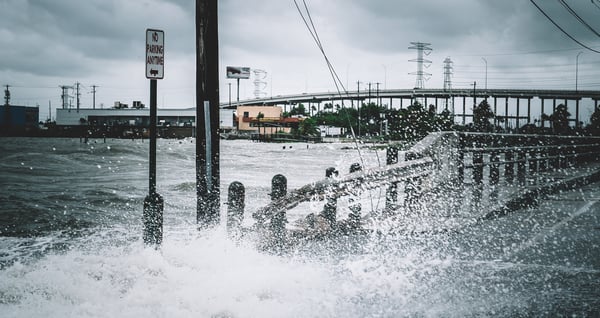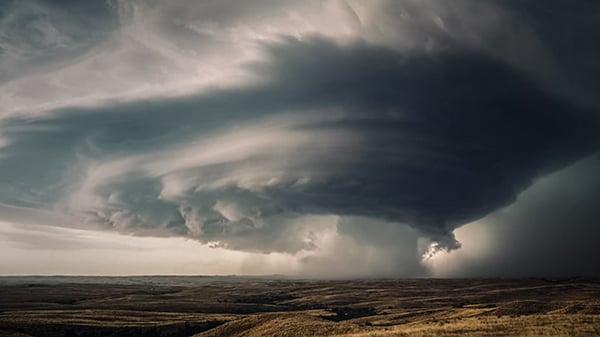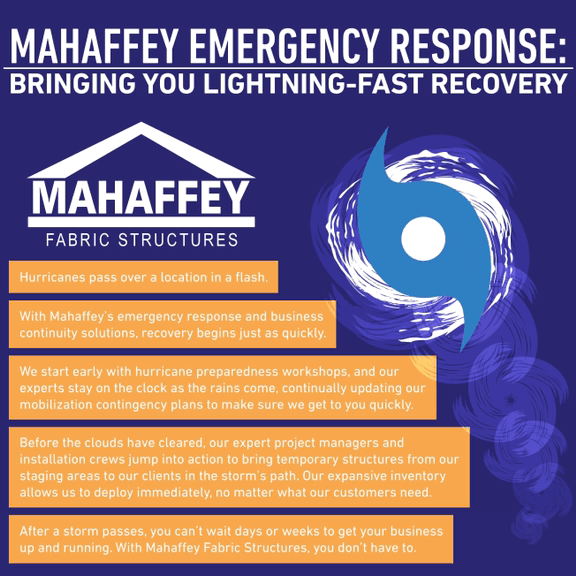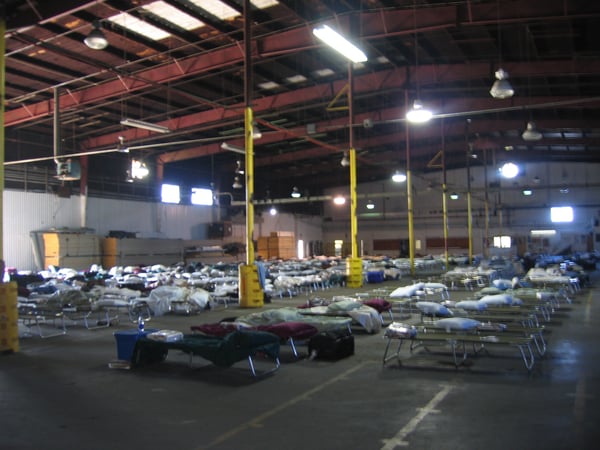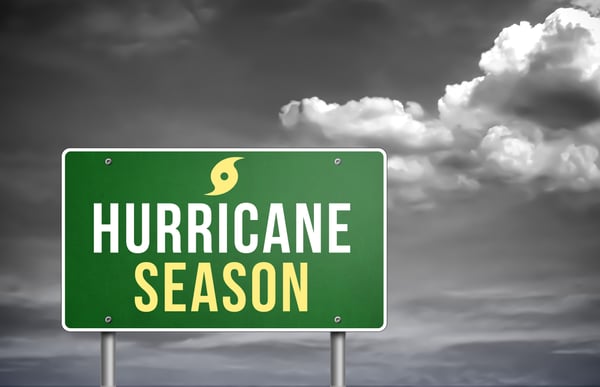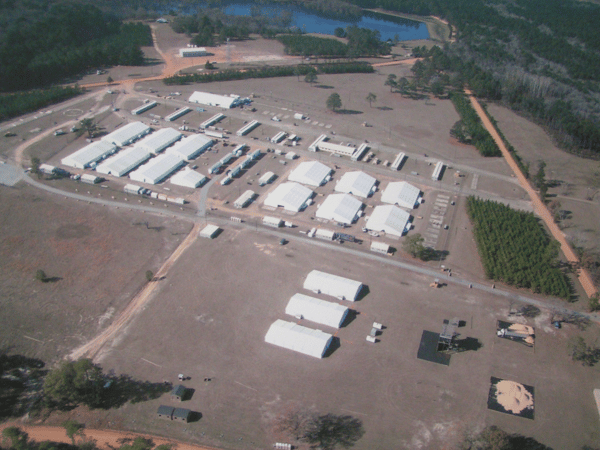Experts say that the 2020 Atlantic hurricane season is the first hurricane season on record in which nine tropical storms formed before August 1. This means we could experience an above-average season. What is average? Well, a lot of storm activity, actually. Over a 20-year period, our country saw an average of 12 tropical storms a year, six hurricanes, and two major hurricanes (category 3 or higher). NOAA anticipates that 2020 could deliver a total of 19 to 25 named storms.
Mahaffey USA is now part of Sunbelt Rentals. Learn More
- Industries
- Structures
- Drive-Through Vaccination Structures
- Warehouses & Storage
- Base Camps & Living Facilities
- Blast Shelters
- Construction & Maintenance Covers
- Containment Structures
- Custom Structures
- Extreme Weather Structures
- Hangars
- Hospital & Medical Facilities
- Lunch & Break Areas
- Movable Structures
- Temporary Firehouses
- Amenities (HVAC, Lights)
- Water Services
- Services
- Case Studies
- Blog
- About Us
-
Contact Us
